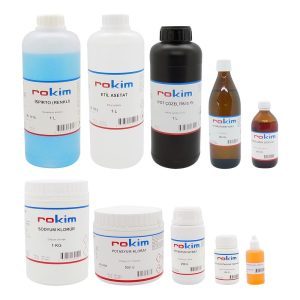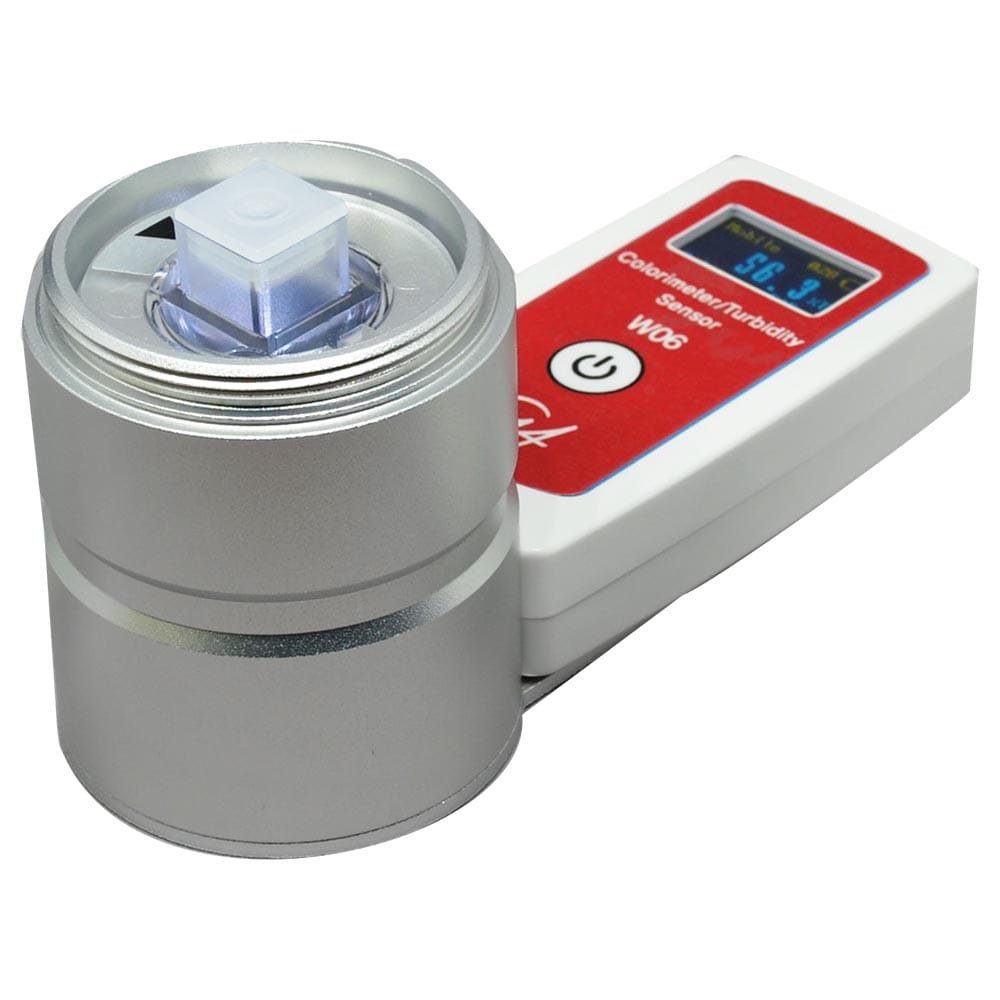The CMA Colorimeter/Turbidity sensor W06 combines two sensors:
Colorimeter; which measures the amount of light transmitted through a sample solution (transmittance) and it can be used to determine the concentration of a solution. It uses six different light wavelengths: 425, 470, 515, 555, 640, and 745 nm.
Turbidity sensor; which measures the level of turbidity in the water in the range between 0 and 200 NTU.
The sensor is delivered with 10 disposable smooth cuvettes with caps and one small bottle containing 100 NTU StablCal Formazin Standard, which is used to calibrate the sensor.
The sensor is equipped with an OLED colour display which shows sensor information and the measured values. This makes the sensor suitable to use as an independent measuring instrument. The power button allows to select the sensor and its range. For accurate sensor detection in the Coach software, first select the desired range before connecting it.
Technical Specifications
- Colorimeter wavelengths: 425, 470, 515, 555, 640 and7 45 nm
- Transmittance measurement range: 90% .. 10% (absorbance: 0.05 .. 1.0)
- Turbidity sensor range: 0 – 200 NTU
- Resolution Colorimeter: 0.1 %T
- Resolution Turbidity sensor: 0.1 NTU
- Warrantee: 24 months
- Temperature range: between 0°C and 60°C (Max. 85% RH)
- Maximal sampling rate: 100 Hz
- Battery life: 4h when full (rechargeable)
- Connection: Bluetooth 5, Low Energy (Mac, Android, iOS) Bluetooth 2.1, Classic (Windows) or USB-C 2.0
All specifications of the sensor are described it its User guide.
Suggested Experiments
- Application of Beer\’s law e.g. Crystal violet or Copper Sulphate.
- Measuring of unknown concentrations.
- Reaction kinetics – measuring reaction rate, reaction order or reaction equilibrium.
- Quantitative determination of biological molecules e.g. sugars, protein, vitamin.
- Quantitative determination of inorganic ions e.g. nitrate, phosphate.
- Population growth of microorganisms.
- Determination of water quality.
- Determine the rate of settling of a sample.
- Measure the formation of a precipitate.


















































































